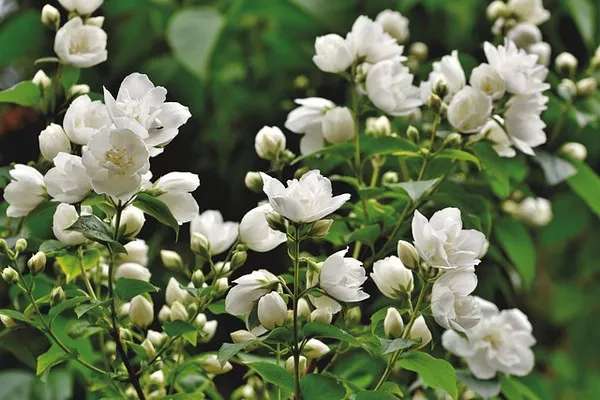In the diverse tapestry of life that blankets our planet, there exists a group of organisms that truly stand out as botanical wonders – the flowering plants, or angiosperms. These remarkable organisms dominate terrestrial ecosystems and play a pivotal role in our daily lives. From the blossoms that adorn our gardens to the staple crops that sustain us, flowering plants are undeniably the most significant group of plants on Earth. In this article, we will delve into the world of angiosperms, exploring their unique features, evolutionary history, ecological importance, and their invaluable contributions to human civilization.
See Also: The Role of Flowers in the Life of Plants: A Full Overview
The Remarkable Features of Flowering Plants
Flowering plants, scientifically known as angiosperms, are characterized by several remarkable features that set them apart from other plant groups. The defining feature of angiosperms is the presence of flowers, complex structures that serve as the reproductive organs of the plant. These flowers are composed of various parts, including sepals, petals, stamens, and carpels, each with a specific function in the pollination and fertilization process.
One of the most distinctive features of angiosperms is the production of seeds enclosed within fruits. This adaptation offers significant advantages in terms of seed protection, dispersal, and dormancy. The diversity of fruits among angiosperms is staggering, ranging from succulent berries to hard-shelled nuts and wind-dispersed samaras.
Additionally, angiosperms exhibit an impressive diversity in leaf morphology, ranging from simple, undivided leaves to intricately lobed or compound leaves. This variability in leaf form allows angiosperms to occupy a wide range of ecological niches and adapt to different environmental conditions.
The Evolutionary History of Angiosperms
Understanding the evolutionary history of angiosperms is crucial to appreciating their significance in the plant kingdom. Angiosperms first appeared during the Early Cretaceous period, approximately 140 million years ago. Their sudden and rapid diversification during this period is often referred to as the “angiosperm radiation.” While the precise origin of angiosperms remains a subject of ongoing research, it is clear that they have since evolved into a diverse and highly successful group of plants.
One key factor contributing to the success of angiosperms is their coevolution with pollinators. The development of flowers and their ability to attract insects, birds, and other animals for pollination played a pivotal role in their evolutionary success. This mutualistic relationship between angiosperms and their pollinators allowed for more efficient reproduction and increased genetic diversity within the angiosperm lineage.
Angiosperms have also coevolved with herbivores and predators, developing various mechanisms for defense against herbivory, such as thorns, spines, and chemical toxins. This ongoing arms race between angiosperms and herbivores has driven the evolution of diverse defense strategies.
Ecological Significance of Flowering Plants
The ecological importance of angiosperms cannot be overstated. They dominate terrestrial ecosystems worldwide, occupying a wide range of habitats, from arid deserts to lush rainforests. Their adaptability to various environmental conditions makes them critical in stabilizing ecosystems and supporting biodiversity.
One of the most vital roles played by angiosperms is their contribution to food webs. As primary producers, they provide the foundation for countless terrestrial food chains. In forests, grasslands, and wetlands, angiosperms are a primary food source for a wide variety of herbivores, including insects, mammals, and birds. The abundance and diversity of angiosperms directly influence the abundance and diversity of herbivores and, subsequently, higher trophic levels.
Angiosperms also play a significant role in carbon cycling and the regulation of the Earth’s climate. Through photosynthesis, they absorb carbon dioxide from the atmosphere and release oxygen, mitigating the effects of greenhouse gases and helping to maintain the planet’s overall climate stability.
In addition to their ecological roles, angiosperms provide numerous ecosystem services, including soil stabilization, water purification, and erosion control. Wetlands, for example, are often dominated by angiosperms that filter pollutants from water and provide vital habitat for various species.
Human Dependence on Flowering Plants
Beyond their ecological significance, angiosperms are of paramount importance to human civilization. Throughout history, we have cultivated and relied upon these plants for food, medicine, textiles, and shelter. The following are just a few examples of the many ways in which angiosperms have shaped human existence:
Agriculture: Angiosperms are the source of most of our staple crops, including wheat, rice, maize, and potatoes. Without these plants, human civilization as we know it would not have been possible.
Medicine: Many pharmaceuticals are derived from compounds found in angiosperms. Plants like the opium poppy (Papaver somniferum) have yielded essential painkillers, while the bark of the quinine tree (Cinchona) has been a crucial treatment for malaria.
Fiber: Cotton, flax, and hemp, all derived from angiosperms, have been used for thousands of years to make textiles, ropes, and paper.
Wood: Hardwood and softwood trees, including oak, pine, and maple, are angiosperms that provide valuable timber for construction and manufacturing.
Ornamental Plants: The horticultural industry relies heavily on angiosperms for their aesthetic appeal, with countless species and cultivars gracing gardens, parks, and landscapes worldwide.
Conclusion
The world of angiosperms is a testament to the astonishing diversity and adaptability of life on Earth. These remarkable plants have not only shaped terrestrial ecosystems but have also played an indispensable role in the development of human civilization. From their intricate flowers to their wide range of ecological functions, angiosperms continue to be a source of wonder and fascination for scientists and nature enthusiasts alike. As we continue to explore and study these botanical marvels, we gain a deeper appreciation for their significance in the tapestry of life that surrounds us.


